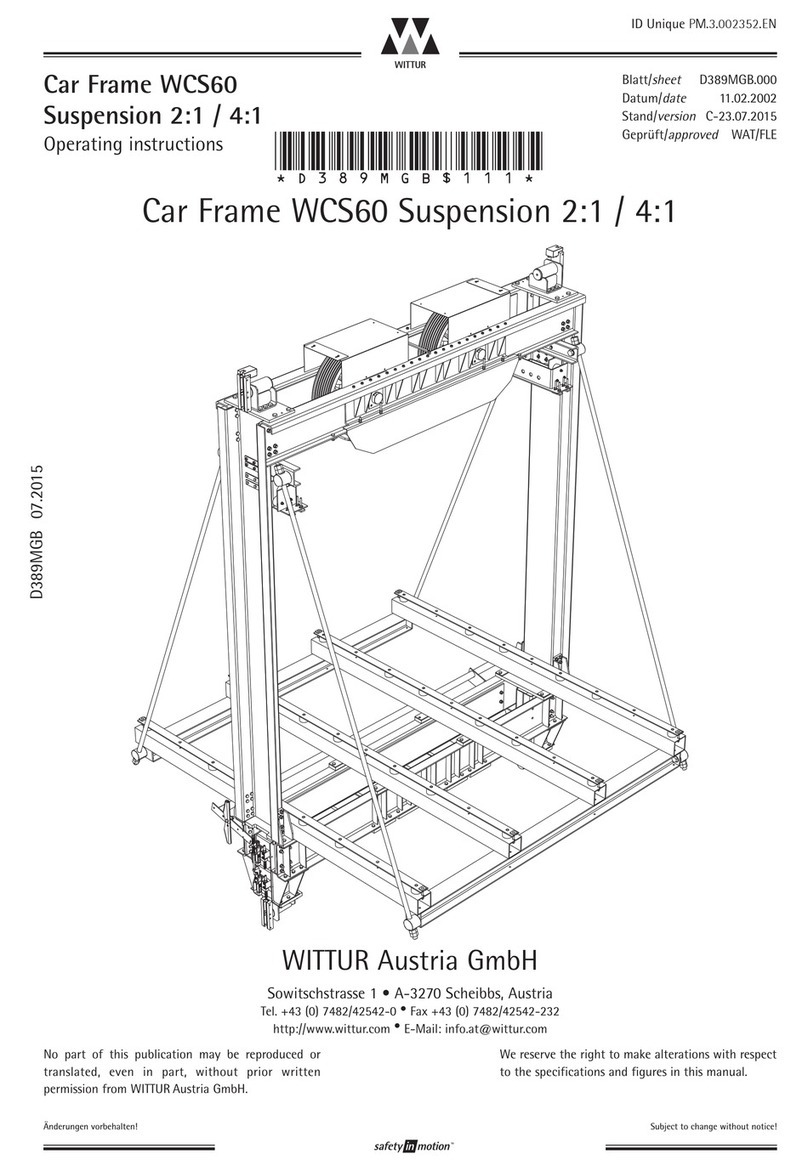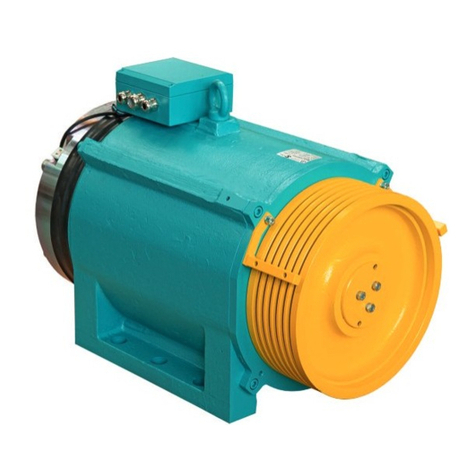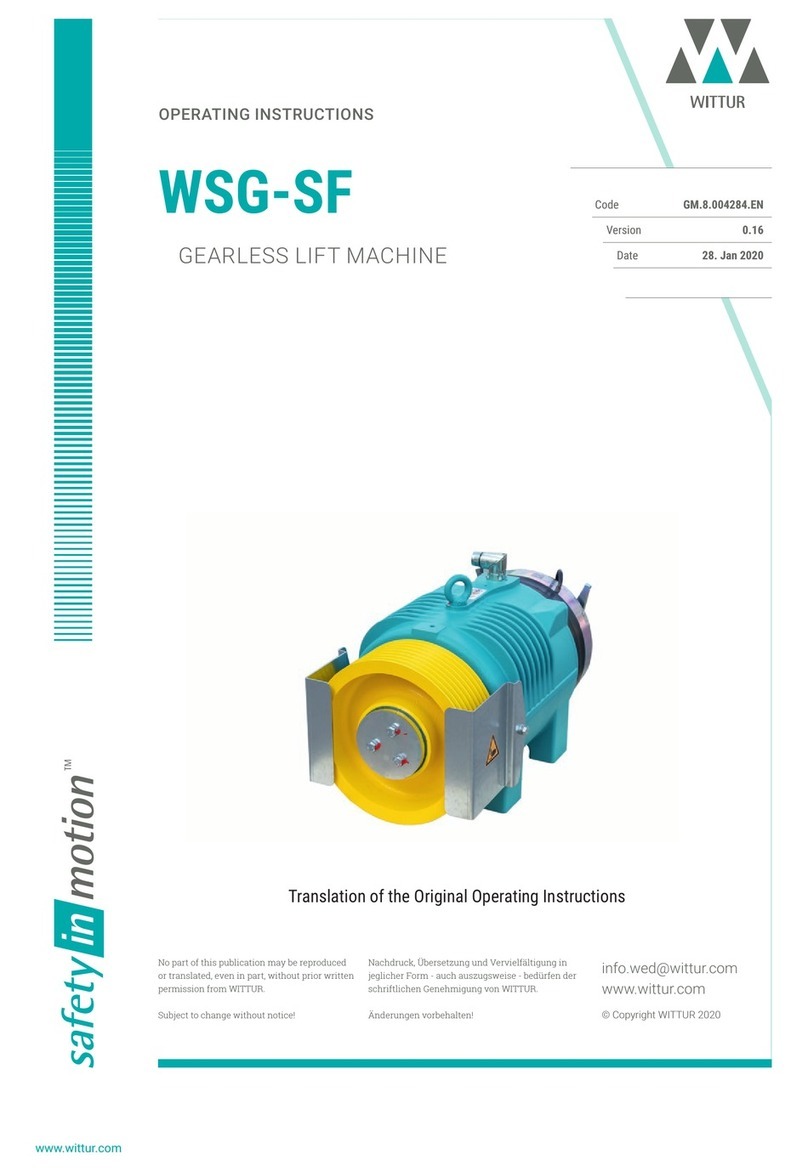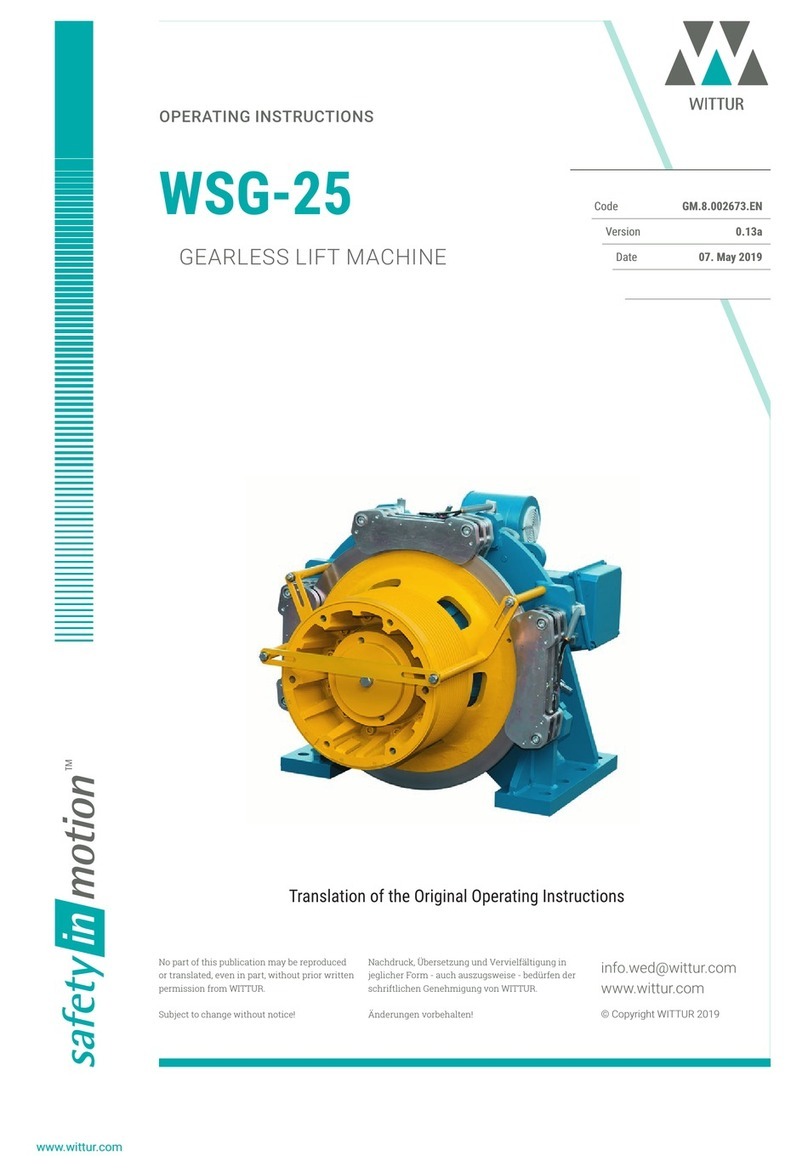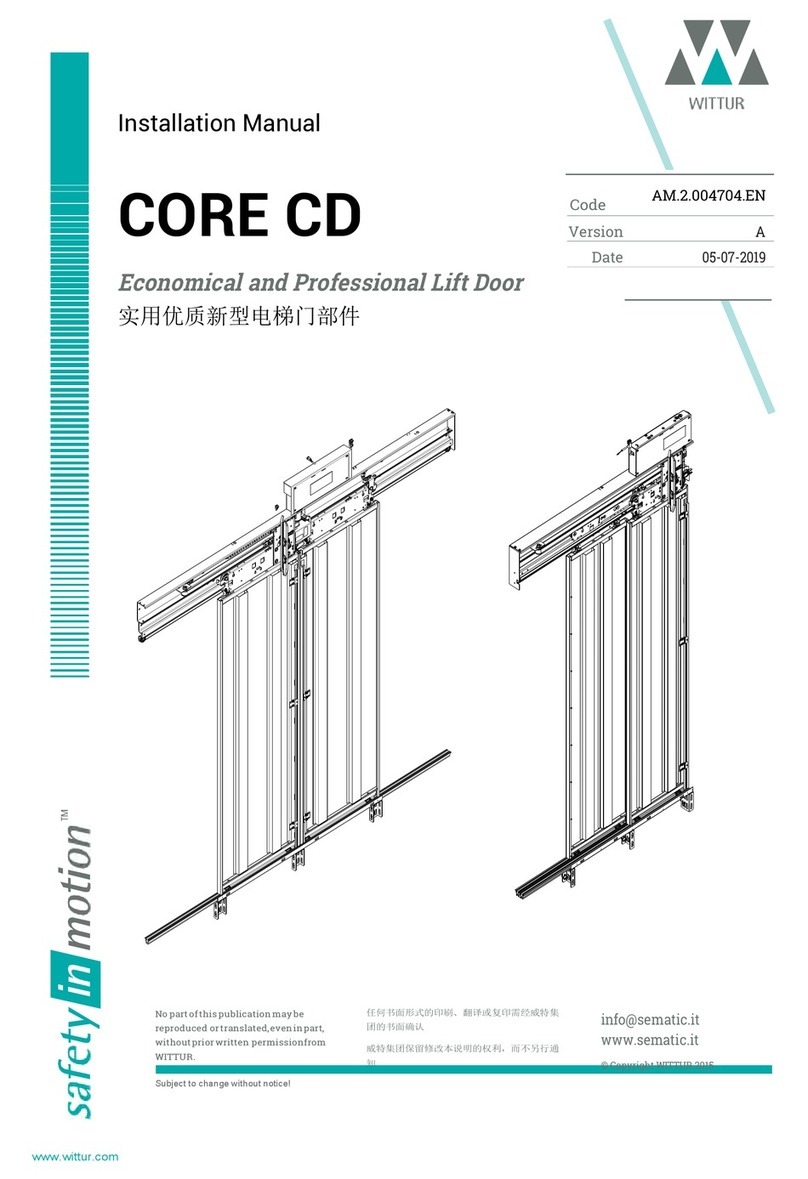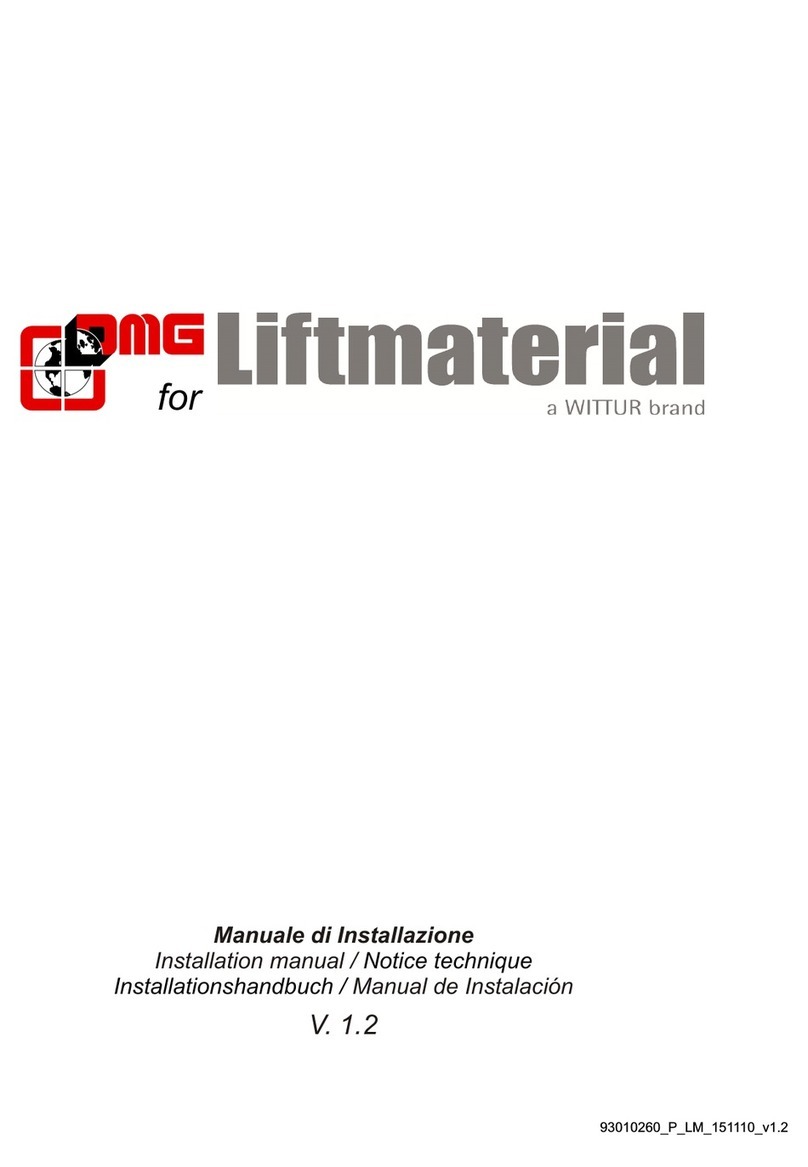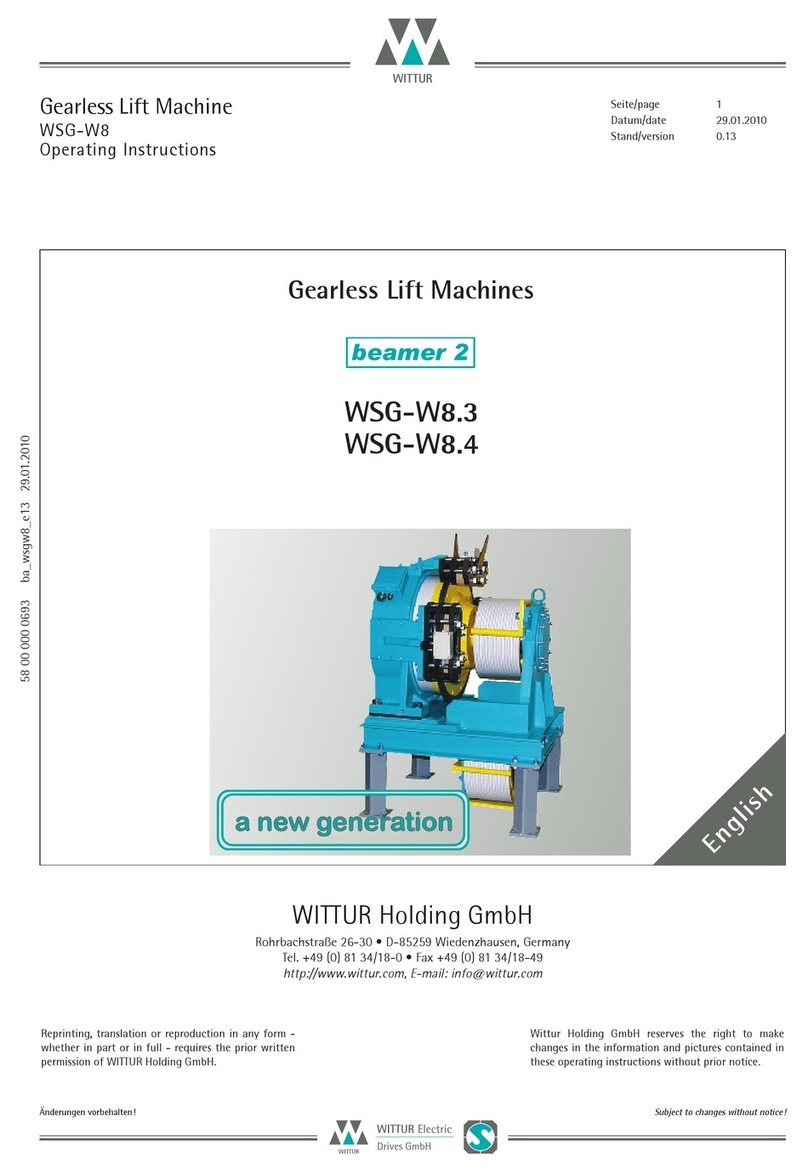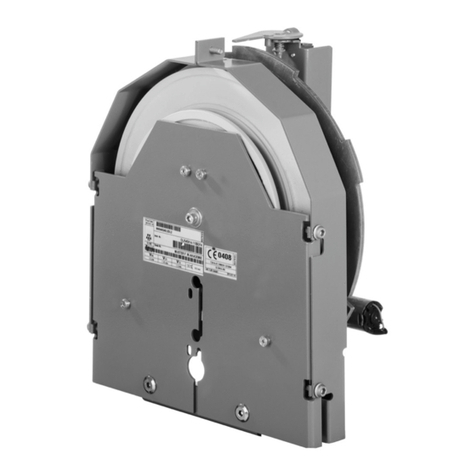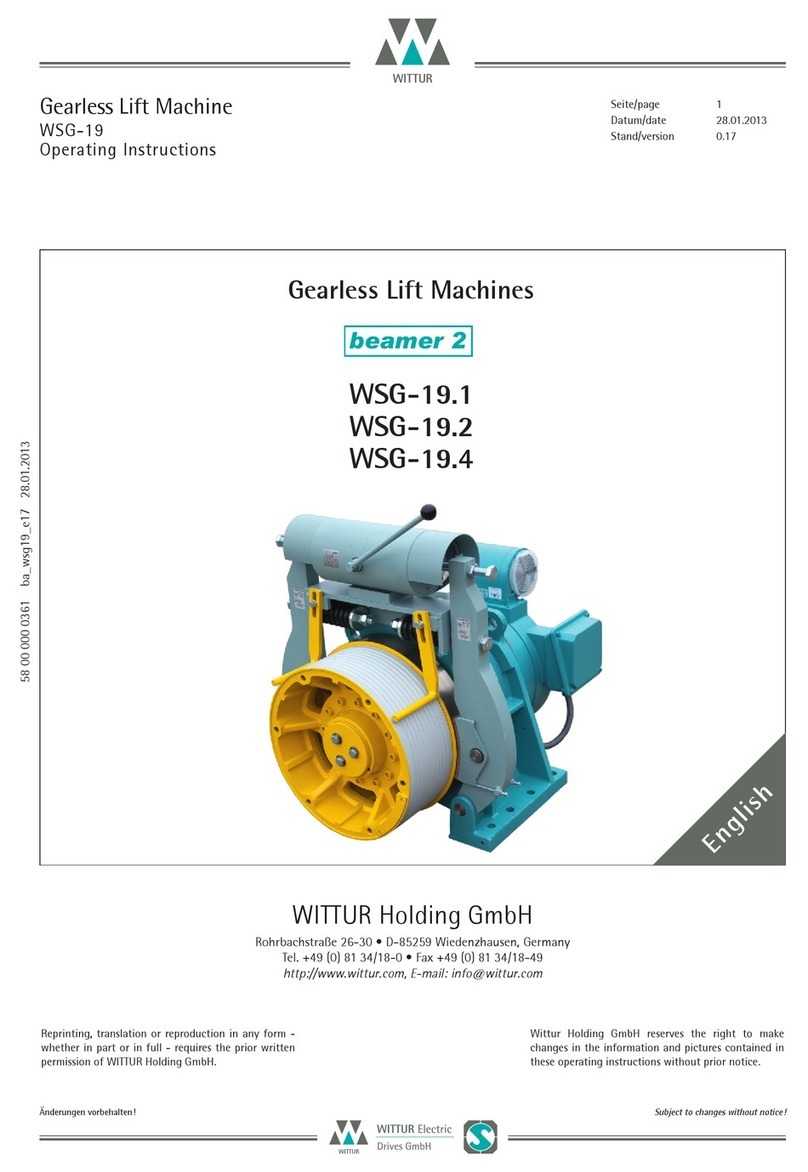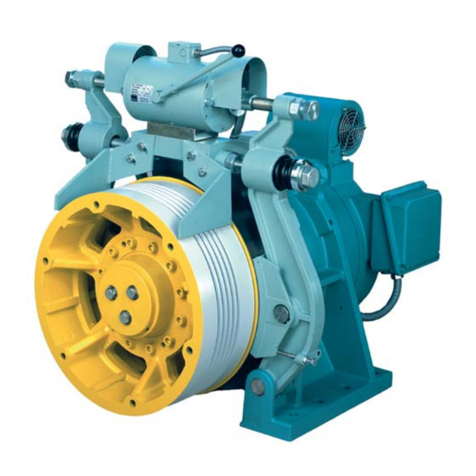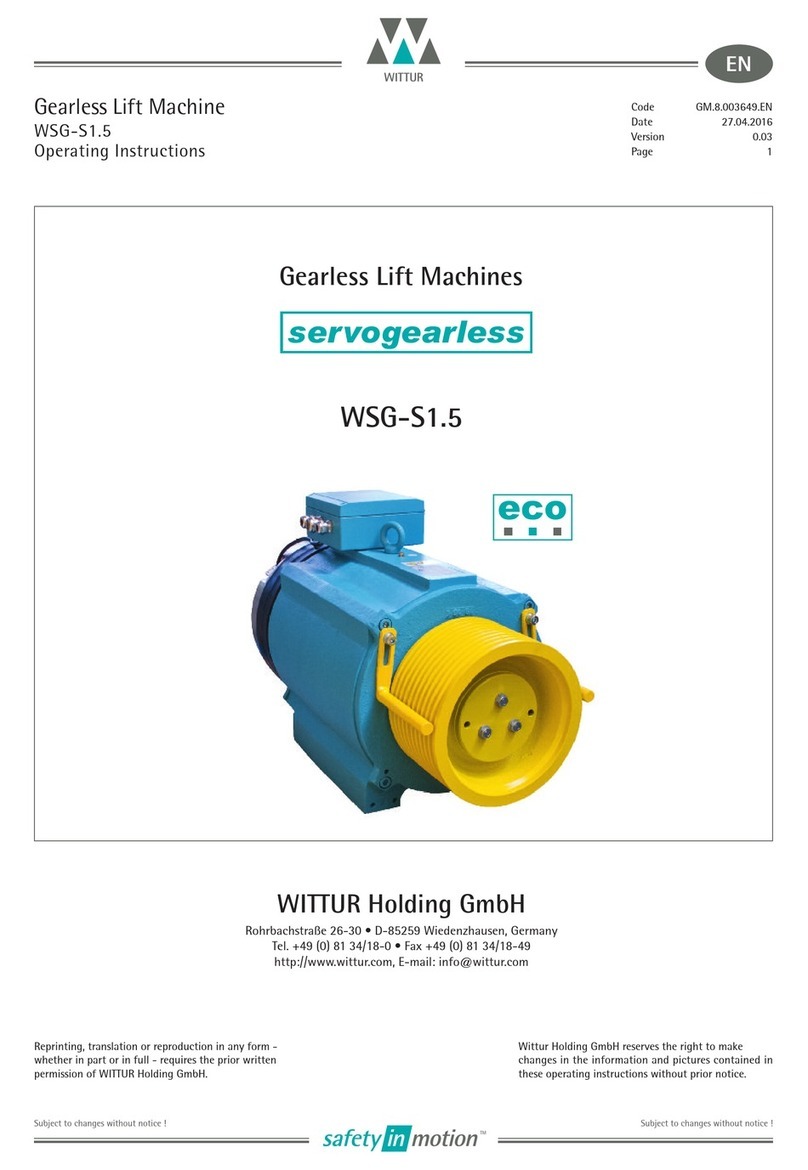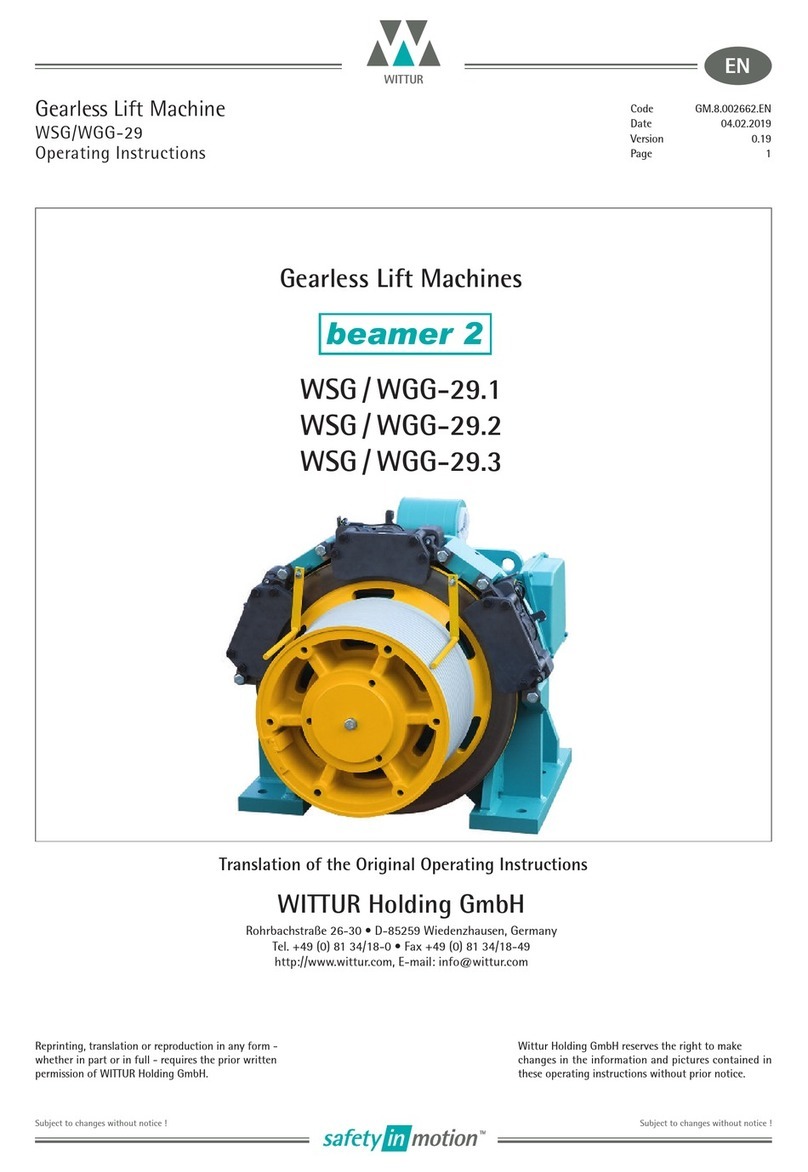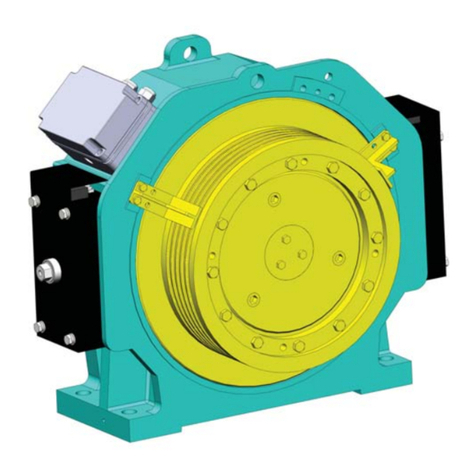
Home Lift - Elevating platform
Test instructions
Subject to change without notice!
EXCELLENCE IN COMPONENTS
Sheet 6
Version 1111732001 V02
Approved ISC
Original instructions
h) the alarm device, when activated,
operates correctly;
i) the mechanical blocking device is
provided and effective;
j) triggering of overload detection device
operates correctly (rated load + 7 kg);
k) undergo without failure a dynamic test,
with the maximum working load at the
rated speed;
l) undergo without permanent
deformation a static test with rated
load multiplied by a coefficient of 1,2 ;
Especially, please check carefully the following
items:
4.3.2. Machinery spaces
The following examinations and test must be
done:
Regulatory plates
Check that the danger nameplate is present
and visible in the machine room door or, if
there is no machine room, near the machinery
cabinet, so as to the operating instructions of
the platform.
Also check that all the relevant materials (such
as pump unit, cylinder, safety gear, controller,
etc.) have the correspondent nameplates with
the serial number, model, name of
manufacturer, technical characteristics, etc.
Machinery cabinet
It must have imperforate walls, floor, roof and
door. It must have ventilation outlets.
Machine room door lock
The machine room door or, in case, the
machinery cabinet, must have an access key
and must be closed and locked without that
key. Both machine room door and machinery
cabinet door must open on the outer direction.
Ventilation
The machine rooms and cabinets must have
enough ventilation outlets. In case of
machinery cabinets, these must be done in a
way that assures enough protection against
dust, humidity and toxic gases.
Lighting and power supply
The lighting must assure in the work zones at
least 200 lux at floor level. Check that the
power supply for car and well is independent
of the one for the drive.
Hand pump lever
In hydraulic platforms a hand pump must
allow to move the car upwards. This device
must be permanently installed in all platforms
with safety gear or blocking device.
Check that the drive unit of hydraulic
platforms is provided with a downward valve,
which allows moving the car downwards, even
in case of power failure. The car speed cannot
exceed 0.3 m/s in this operation.
Dimensions
The dimensions of the machine room or in
front of the machinery cabinet should be big
enough to accommodate the following spaces:
a) a clear horizontal area in front of the
control panels and the cabinets. This area is
defined as follows :
1) depth, measured from the external
surface of the enclosures, at least 0,7m;
2) width, the greater of the following
values : 0, m or the full width of the
cabinet or panel;
b) a clear horizontal area of at least 0, m x
0,6 m for maintenance and inspection of
moving parts at points where this is necessary
and, if need be, manual emergency operation
Cleanliness
Check the good state of cleanliness in both
machine room or machinery cabinet.
4.3.3. Drive unit
Oil level
